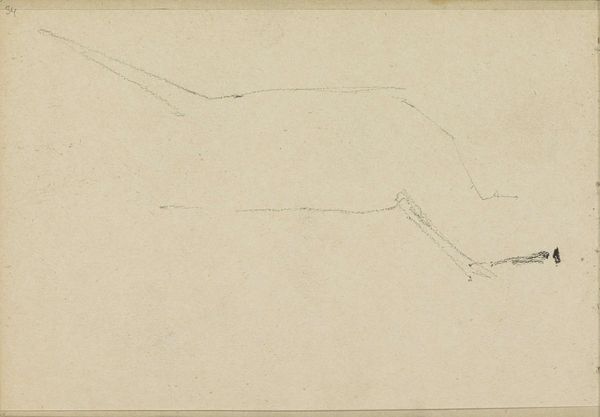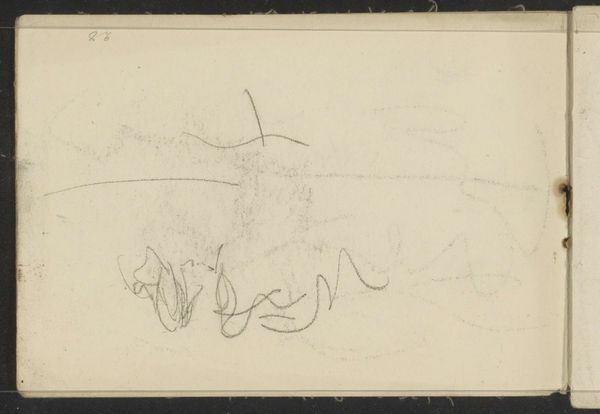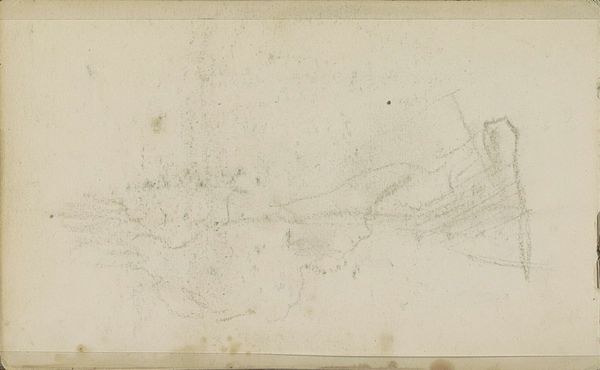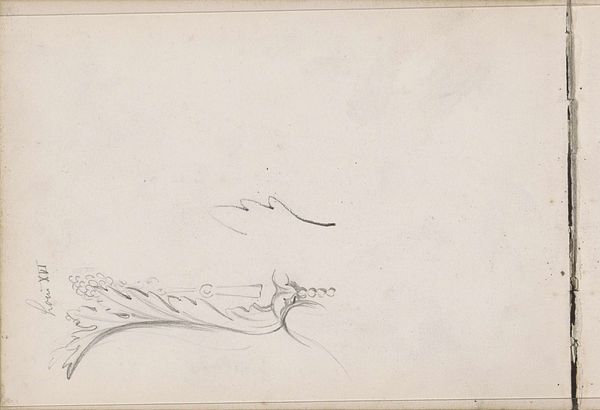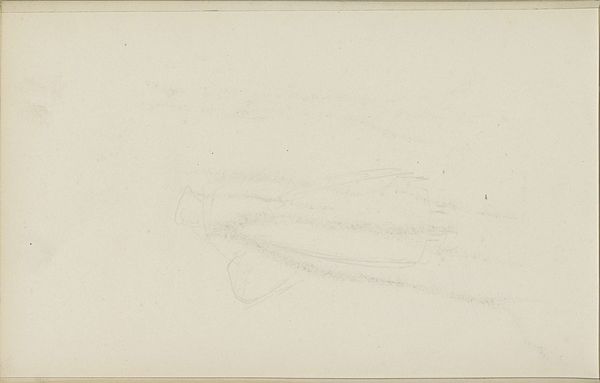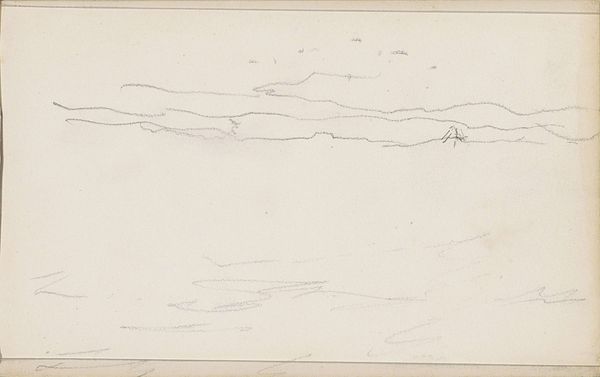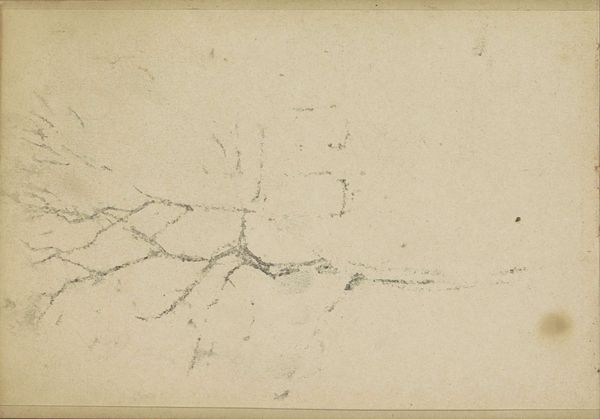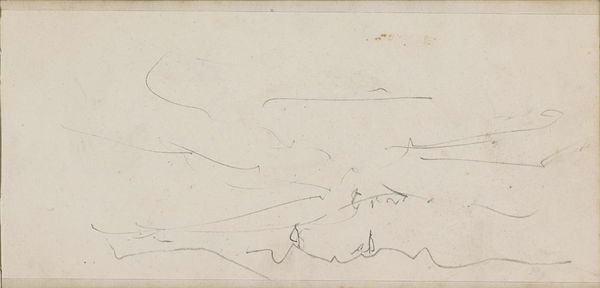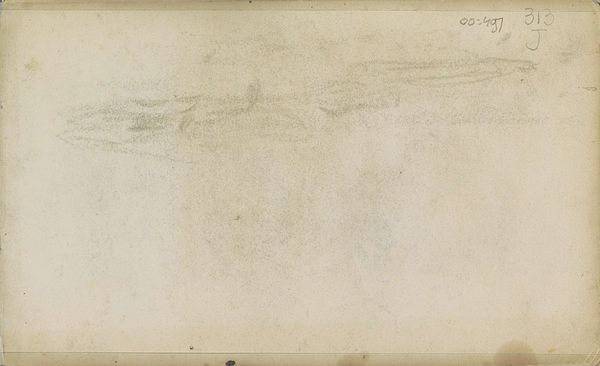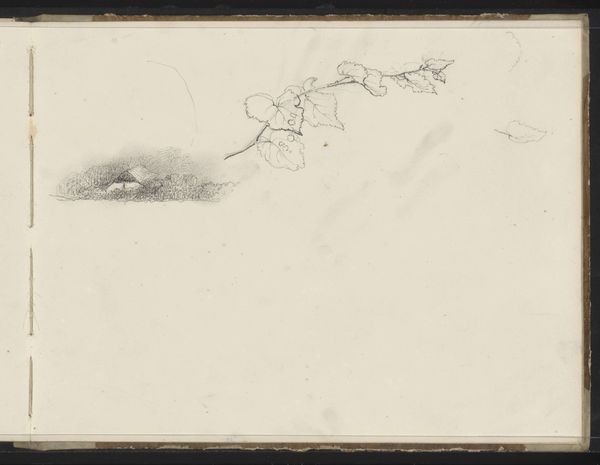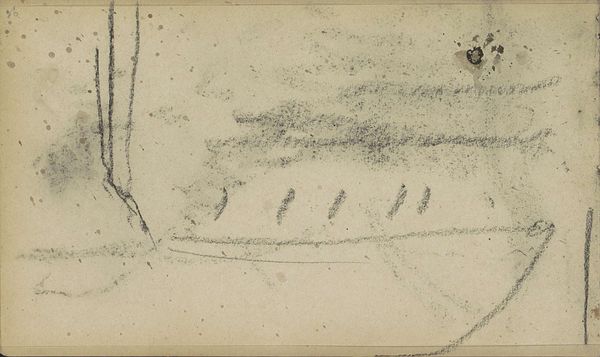
drawing, paper, pencil
#
drawing
#
figuration
#
paper
#
pencil
#
line
Copyright: Rijks Museum: Open Domain
Editor: So, this is "Studie" by Willem Cornelis Rip, dating between 1866 and 1922. It's a pencil drawing on paper, and it feels... really sparse, almost incomplete. What do you see in this piece? Curator: I see potential. Think of a line not just as a mark, but as a record of movement, of energy transferred from the artist's hand to the page. This line, however faint, is loaded with symbolic weight. What narrative emerges from such subtle rendering? Where does it seem to guide your eye? Editor: I guess my eye follows the main line, but it's hard to make out what it is. Maybe branches? Curator: Perhaps. Branches, roots, pathways...consider their shared symbolism. Each represents connection, ancestry, growth. Rip offers us a stripped-down representation. What might be the psychological impact of seeing something so essential, so reduced? Editor: It makes me think about beginnings, like sketching out an idea before building on it. Curator: Exactly! And consider that culturally, the act of sketching itself often symbolized intellectual exploration and the birth of innovation during this period. Could this study reflect the artist's own quest to express profound emotions using minimalist elements? Does the ephemeral nature of the line further emphasize themes of memory, absence and origin? Editor: That makes a lot of sense. I initially saw it as unfinished, but I now appreciate the simplicity and focus on core symbols. Thanks! Curator: Indeed. Sometimes the smallest of strokes carries the greatest meaning, inviting introspection and bridging personal and cultural memory.
Comments
No comments
Be the first to comment and join the conversation on the ultimate creative platform.
